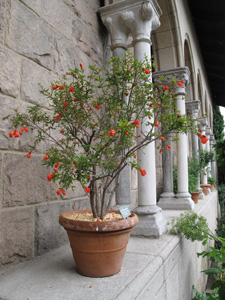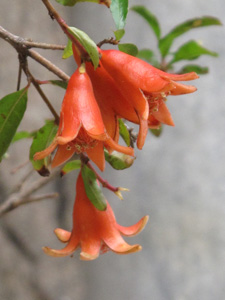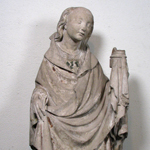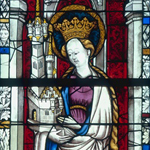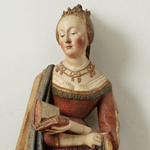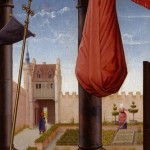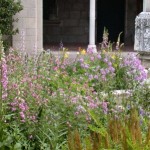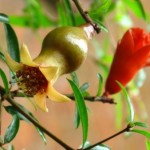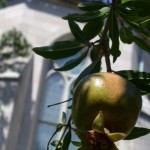Pomegranate Flowers
It is June, it is June,
the pomegranates are in flower,
the peasants are bending cutting the bearded wheat.The pomegranates are in flower
beside the high road, past the deathly dust,
and even the sea is silent in the sun.Short gasps of flame in the green of night, way off
the pomegranates are in flower,
small red flowers in the night of leaves.And noon is suddenly dark, is lustrous, is silent and dark
men are unseen, beneath the shading hats;
only, from out the foliage of the secret loins
red flamelets here and there reveal
a man, a woman there.???Andraitx???Pomegranate Flowers, by D.H. Lawrence
From left to right: The vivid scarlet blossoms of a potted dwarf pomegranate tree in full flower glow against the gray stone of the blind arcade in Bonnefont garden; detail of pomegranate flowers. Both dwarf and standard forms of pomegranate are grown here. Although cultivated for hundreds of years, the dwarf form is not medieval, but it lends itself to pot culture, and can be more easily managed than the full-sized tree. Photographs by Carly Still
Although these photographs were taken just a few days ago on a gray day in Bonnefont garden, this post is coming from sunny California, where I am participating in a panel discussion on museums and gardens at the Getty Center in conjunction with an exhibition curated by Bryan Keene. Read more »

